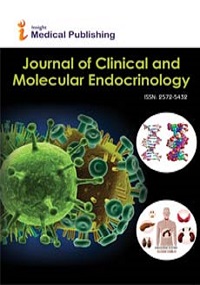Theme: Novel advancements in Diabetes & Endocrinology
Diabetes Expo Asia Pacific 2020
Conference Series invites worldwide global audience and presenters to participate at the Global Summit on Diabetes & Endocrinology which is to be held in Kyoto, Japan during August 24-25,2020. Special interest and theme of the conference is “Novel Research in Diabetes & Endocrinology”.
Global Summit on Diabetes & Endocrinology 2020 aims to provide an opportunity to share knowledge, expertise along with unparalleled networking opportunities between a large number of medical and industrial professionals in this sphere. The meeting gathers renowned scientists, physicians, surgeons, young researchers, industrial delegates and talented student communities in the field of diabetic medicine under a single roof where networking and global partnering happens for the acceleration of future research. This conference is an international platform for presenting research about diabetes management and therapeutics, exchanging ideas about it and thus, contributes to the dissemination of knowledge in management of the disease for the benefit of the society.
Conference Series llc LTD organizes a conference series of 1000+ Global Events inclusive of 300+ Conferences, 500+ Upcoming and Previous Symposiums and Workshops in USA, Europe & Asia with support from 1000 more scientific societies and publishes 700+ Open access journals which contains over 30000 eminent personalities, reputed scientists as editorial board members
Why to attend?
Diabetes Expo Asia Pacific 2020 highlights the theme “Novel advancements in Diabetes & Endocrinology” Which emphasis on the latest advancements in prevention and treatment cure of various metabolic diseases which may be due to diabetic and endocrine complications and provides robust discussions on methods and strategies related to diagnosis, prevention and management of metabolic disorders as well as explore new ideas and concepts for treatment of Endocrine Complications..
Target Audience:
- Endocrinologists
- Diabetologists
- Researchers
- Practitioners/Doctors
- Students
- Nurse educator
- Podiatrist
- Dietitian
- Eye Doctors
- Nephrologists
- Physical trainer or Exercise physiologist
Track 1: Diabetes: Types and its Complications
Type 1 diabetes: It is usually caused by auto-immune reaction whereas the body’s defense system attacks the cells that produces insulin. The main reason for this is not fully understood. People with type 1 diabetes produce very less insulin. People with this form of diabetes needs injection of the insulin every day in order to control the glucose levels in their blood.
Type 2 diabetes: It is used to be called non-insulin adult-onset type of diabetes, and this accounts for at least 90% of cases. It is characterized by relative insulin resistance and insulin deficiency, either of which may be present at the time diabetes is recognized. People with this type of diabetes can initially manage their condition through exercise and diet.
Track 2: Endocrine and Diabetes Disorders
- Endocrine Disorders causes when a gland produces too much or too little of an endocrine hormone, called as hormone imbalance and due to the development of lesions in the endocrine system, which may or may not affect hormone levels.
- Adrenal insufficiency: The adrenal gland releases little hormone cortisol and sometimes, aldosterone. Symptoms include stomach upset, dehydration, fatigue.
- Cushing's disease. Overproduction of a pituitary gland hormones leads to overactive adrenal gland. A similar condition called Cushing's syndrome may occur particularly in children, who take high doses of corticosteroid medications.
- Hypothyroidism. The thyroid gland does not produce enough thyroid hormone, leading to fatigue, depression, constipation, dry skin.
- Hypopituitarism. The pituitary gland releases less or no hormones. It may be caused by several different diseases. Women with this condition may stop getting their periods regularly.
- cromegaly and other growth hormone problems. If the pituitary gland produces too much growth hormone, a child's bones and other body parts may grow abnormally. If growth hormone levels are too low, a child may stop growing in height.
- Multiple endocrine neoplasia: These rare, genetic conditions are passed through the families. They cause tumors of the adrenal, parathyroid and thyroid glands, leading to overproduction of the hormones.
- Precocious puberty. Abnormally early puberty that occurs when glands tell the body to release the sex hormones too soon in life.
Track 3: Pathophysiology: Endocrinology and Diabetes
Endocrine disorders can be classified according to the origin of endocrine disorder and according to the intensity of hormonal activity. From intensity of the hormonal activity of endocrine gland we can distinguish hyper function of endocrine gland, which is characterized by increased secretion of its hormone and by increased concentration of this hormone in circulating blood. Hypo function of endocrine gland, which is characterized by decreased concentration of this hormone in circulating blood and decreased secretion of its hormone as well.
Endocrine disease results when a gland produces too little or too much of an endocrine hormone called hormone imbalance. Diabetic Ketoacidosis is caused in type 1 diabetes where there is reliance on fatty acids for energy and complete lack of insulin. This uncontrolled lipid breakdown leads to formation of causes acidosis, ketones and ketonemia. This is a medical emergency.
Track 4: Pediatric endocrinology
Pediatric endocrinology deals with the disorders of endocrine glands, such as variations of sexual development in childhood, diabetes, physical growth and many more. The most common disease of the specialty is type 1 diabetes, which usually accounts for 50% of a typical clinical practice.
Pediatric endocrinologists are usually the primary physicians involved in the medical care of children and infants with intersex disorders. This deals with hypoglycemia and the other forms of hyperglycemia in childhood, variations of puberty, as well other adrenal, pituitary and thyroid problems.
Track 5: Diabetic & Endocrine Diagnostic Tools and Tests
- Adrenal Venous Sampling for Aldosterone, Androgen Levels, Angiography, Arterial Stimulation with Venous Sampling, Arginine Stimulation Test, Autonomic Function Tests
- Basal Acid Output (BAO), Bilateral Simultaneous Inferior Petrosal Sinus Sampling (IPSS) with CRF, Bone Marrow Aspirate
- C-peptide Suppression Test, Captopril Test, Clomiphene Test, Calcium Infusion Test for Medullary Cancer of the Thyroid, Clonidine Suppression Test, Cortisol Day Curve, CRH Test, Combined Pituitary Function Tests (CPT).
- Glycated hemoglobin (A1C) test, Exercise Test, Finger Size Assessment, Gastric Acid Secretion, Glucagon Test, Glucose Tolerance Test, Fasting Test, Fine Needle Aspiration of a Thyroid Nodule (FNA), Gonadotrophin Releasing Hormone GnRH/LHRH Test
- High Dose Dexamethasone Suppression Test, Hydrocortisone Day Curve (HCDC), Hydroxycorticosterone (18-OHB) and, Hyperparathyroidism Investigations, - cortisol (18-OHF) Tests, Hyperaldosteronism Investigation.
Track 6: Endocrinology: Male & Female Reproductive Health
Reproductive Endocrinology is a sub-specialty of Gynecology & Obstetrics. Reproductive endocrinologist is a very important part of obstetrics and gynecology in which physician is trained in reproductive medicine explaining about the hormonal functioning as it is indirectly related to reproduction. They are prepared to evaluate and treat malfunctioning in males and females outside infertility. Reproductive endocrinologists have specific training in obstetrics and gynecology before they undergo sub-specialty training in Reproductive endocrinology and infertility.
The glands testes produce abnormally low amounts of testosterone, may receive testosterone replacement therapy. For some men, lower than normal testosterone produces no apparent effects; for others, effects of this condition may include:
- Reduced sexual function, in terms of desire, erections and fertility
- Reduced muscle size and strength, more body fat and lower bone density
- Insomnia or other sleep problems
Female endocrinology has to do largely with the reproductive cycle driven by estrogen and other cyclical female hormones. Related issues that the endocrinologist may help evaluate:
- Heavy, light or absent menses
- Premenstrual syndrome
- Abnormalities that may produce symptoms that cycle with menses, such as ovarian cysts or uterine fibroids
- Early or delayed menarche
- Menstrual irregularity
Track 7: Advance Treatment and Prevention of Diabetes
Check your risk of diabetes: Risk assessment test and learn more about your risk of developing type 2 diabetes. A 12+ score indicate that you are at high risk and may be eligible for the Life! Program - a free Victorian lifestyle modification program that helps you reduce your risk of type 2 diabetes and cardiovascular disease.
Manage your weight. Excess body fat, particularly if stored around the abdomen, can increase the body’s resistance to the hormone insulin. This can lead to type 2 diabetes.
Exercise regularly. Moderate physical activity on most days of the week helps manage weight, reduce blood glucose levels and may also improve blood pressure and cholesterol.
Eat a balanced, healthy diet. Reduce the amount of fat in the diet, especially saturated and trans fats. Eat more fruit, vegetables and high-fiber foods. Cut back on salt.
Limit takeaway and processed foods. ‘Convenience meals’ are usually high in salt, fat and kilojoules. It’s best to cook for yourself using fresh ingredients whenever possible.
Limit your alcohol intake. Too much alcohol can lead to weight gain and may increase your blood pressure and triglyceride levels. Men should have no more than two standard drinks a day and women should have no more than one.
Quit smoking. Smokers are twice as likely to develop diabetes as non-smokers.
Control your blood pressure. Most people can do this with regular exercise, a balanced diet and by keeping a healthy weight. In some cases, it might need medication prescribed by the doctor.
Reduce your risk of cardiovascular disease. Diabetes and cardiovascular disease have many risk factors in common, including obesity and physical inactivity.
Track 8: Diabetic Nephropathy
Diabetic nephropathy is a disease/ the damage caused by diabetes to your kidney, which in some sever cases can lead to kidney failure. The waste from our blood is filtered by tiny blood vessels present in our kidney, and they can be destroyed by high sugar level in our body. The body retains excess salts and water than required leading to weight gain and ankle swelling. This leads to malfunction or kidney failure in further stages. No symptoms are shown in primary stages so, regular urine tests are required to detect kidney damage.
Diabetes may also lead to damage to nerves, which can lead to difficulty in emptying bladder and creating pressure injuring your kidney. Long time retention of urine in bladder leads to infections as bacterial growth in urine with high blood sugar level is high.
About 10 to 40 % of those with Type 2 diabetes and 30% of patients with Type 1 diabetes gradually will suffer from kidney failure.
Track 9: Diabetes Ophthalmology
Diabetic retinopathy is caused due to damage of the blood vessels in the tissue of retina. Poor control of blood sugar levels is one of the risk factors. The blood vessels may swell and leak fluid and the abnormal development of new blood vessels on the surface of the retina is observed. The accompanying scar tissue might contract and detach from the retina.
Symptoms in initial stages include blurriness, floaters, dark areas of vision and difficulty perceiving colors. There is no cure for diabetic retinopathy but can be treated laser treatments and the surgical removal of vitreous gel (vitrectomy) for good vision.
Track 10: Diabetes and Skin complication
Diabetes can affect every part of body including the skin. It sometimes helps in recognizing people with diabetes earlier. Most of the skin conditions can be easily treatable. Other skin problem like necrobiosis lipoidica, diabetic dermopathy, diabeticorum, eruptive xanthomatosis and diabetic blisters are mostly likely affected in diabetic persons only.
Track 11: Diabetes and Cardiovascular Diseases
Adults with diabetes are more inclined to cardiovascular complication (6% of individuals) like atherosclerosis which narrow the arteries and leads to reduced blood flow to heart. The partial blockage of coronary arteries produces angina and the complete blockage lead to heart stroke. Atherosclerosis also leads to stoke and the complete blockage of blood flow to brain and the arterial disease – poor supply of blood to the legs. These are the major reasons for the death of people with diabetes.
Track 12: Diet and Weight Management
Maintaining a suitable diet is very essential in the diabetic patients in order to reduce the risk of diabetic complications. A proper physical activity and healthy eating pattern is the key component. Generally low carbohydrate is insisted as these are macronutrients which raises the blood glucose levels, foods like whole grains, vegetables, fruits, and nuts, low fat food are best source and high fiber diet is preferred. Some of the methods for healthy diet plan are carbohydrate counting, Glycemic index , the My Plate method, and TLC diet plan.
Track 13: Diabetic Foot and Ankle
Diabetic patients should monitor their feet on regularly basis to avoid the risks which leads to amputation. Even minor wounds like blisters to foot lead to serious consequences, as blood flow decreases in diabetic cases and the wound healing is delayed leading to infection. Predominant pathogens include gram +ve cocci especially streptococci and staphylococci. Chronic or previously treated wounds lead to several microbial cultures for which proper antimicrobial therapy is required.
Track 14: Biomarkers for Diabetes
Molecular biomarker is a naturally occurring gene, molecule or a character which helps in recognizing the diseases. In case of diabetes HbA1c is considered as a biomarker to identify the risk factors for retinopathy, vascular diseases and nephropathy. These provides preventive measures during subclinical stage. The well usage of biomarker within the growth of anti-diabetes medication can help in quick and better understanding of the pathological process of diabetes.
Track 15: Diabetes Complication and Management
The main aim of diabetes management and complication is to bring the carbohydrate metabolism to balanced state. In order to achieve the patients with the insulin deficiency are with pumps or insulin injections and patients with insulin resistance are treated with proper exercise and diet maintenance. The other complication caused due to other disease are to be treated or to be prevented. Maintaining a healthy diet is the best to have a healthy living.
Diabetes is a main factor for development of other secondary conditions and cardiovascular disease. Regular check-ups on blood pressure, HDL, cholesterol, LDL and triglyceride levels, eye examination to prevent diabetic retinopathy.
Track 16: Thyroid Disorders
The butterfly shaped gland located at the base of neck at Adams apple is called as thyroid. It is a part of the endocrine system, which is responsible to co-ordinate many body’s activities. Thyroid glands produce androgen prohormones which regulates the body’s metabolism. When thyroid produces less hormones leading hypothyroidism and when excess hormones are produced leads to hyperthyroidism. Thyroid diseases are mostly affects women than men. In women infertility, problems during pregnancy, miscarriage, menstrual period and childbirth.
Graves’ disease is an immune disorder that leads to excess production of thyroid hormones called hyperthyroidism. The thyroid hormones metabolism is regulated by carbohydrates, protein and fat.
Track 17: Genomic Endocrinology
Genomic endocrinology is explained as the insights that may be gained about physiology and endocrine pathology from application of full range of genetic approaches. Genetic mechanisms leads to endocrine disease and functional studies of genetic mutations that shed novel insights into the pathogenesis and aetiology of endocrine disorders.
Track 18: Environmental Endocrinology
Endocrine system regulates the interactions of organisms with the environment. The endocrine system comprises all the glands and tissues in the body that synthesize, and release chemical-signaling molecules called as hormones. Hormones are made by specific glands, including the hypothalamus, thyroid gland, pituitary gland, adrenal glands, pancreas, ovaries, testes, parathyroid glands and pineal gland. Several other tissues in the body, including the adipose cells, gastrointestinal tract.
Market Analysis Report for Diabetes Expo Asia Pacific 2020 scheduled at Kyoto, Japan during August 24-24, 2020
Global next-generation polygenic illness (Diabetes) hospital treatment and drug delivery market have emerged as worth $617 million in 2015 and is expected to garner $9,673 million with the beneficial resource of 2022, registering 1% at some stage inside the forecast amount 2016-2023. Following generation polygenic disease medical care and also the drug delivery devices is the advanced kind of diabetic product that improve the standard of lifetime of diabetic patients. Oral and inhalable internal secretion introduce a distinct mode of insulin delivery in diabetic patients and are an easy mode of introducing internal secretion than the injectable insulin’s, reducing the chance of skin irritation caused because of needles. Additionally, the dose-volume is definitely calculated in oral & inhalable internal secretion and helps to take care of the dose time. Advanced diabetic medical care within the kind of internal secretion patches, continuous aldohexose observation systems (CGMS), and artificial duct gland helps to improve management of glucose level and reduces the chance of any diabetic-related complications.
The global next generation polygenic disease medical aid and drug delivery market is divided as the supported product sort, demographic, end user, and geographics. Supported product sort is classified into inhalable hypoglycemic agent, oral hypoglycemic agent, hypoglycemic agent patches, CGM systems and artificial exocrine gland. Supported demographics, it's divided into adult population (>14 years) and children population (14 years). Supported indication, it's divided into sort one polygenic disease and sort a pair of polygenic disease. It's classified into diagnostics/clinics, ICUs, and residential health care. Geographically, it's analyzed across North America, Europe, Asia-Pacific and LAMEA.
Asia-Pacific possesses high market potential for the expansion of next generation polygenic disease medical aid and drug delivery market, due to increase in demand for advanced diabetic merchandise, high incidence of polygenic disease, and rise in health care expenditure. It’s full-fledged fast growth, in terms of production and development of advanced diabetic merchandise. South Korea market is projected to grow at a high CAGR of 49.7% throughout the forecast amount.
Major Diabetes Research Associations around Asia Pacific:
- Diabetes Australia Research Program
- Juvenile Diabetes Research Foundation (JDRF)
- Australian Centre for Behavioural Research in Diabetes
- The Diabetes Research Foundation Western Australia
- The John Curtin School of Medical Research
- Baker
- Walter and Eliza Hall Institute, Australia
- Diabetes Australia
- Austrian Diabetes Association
- Dietitians Association of Australia
- Diabetes Association Brisbane
- Canadian Diabetes Association in Sydney
Major Diabetes Research Associations around Globe:
- International Diabetes Federation
- American Diabetes Association
- Canadian Diabetes Association
- Diabetes New Zealand
- Diabetes United Kingdom
- Glycosmedia
- Diabetes Indian Association
- Diabetes Australia
- Austrian Diabetes Association
- Diabetes UK
- Diabetes South Africa
- Spanish Diabetes Society (Spain)
- Swedish Diabetes Association
- Korean Diabetes Association
Diabetes Expo Asia Pacific 2020 witnessed associate degree uniting of nonpareil speakers WHO enlightened the group with their information and confabulated on varied new-fangled topics associated with the sector of polygenic disease and medical specialty with specifically Kassahun Gebeyehu Yazew University of Gondar, Ethiopia.
Contact:
Richie Bronson
Program manager
Diabetes Expo Asia Pacific 2020
Email: diabetesexpo@asiameets.com
Tel: +44-203-769-097-2 Ext: 5086
Conference Highlights
- Genomic Endocrinology
- Diabetes: Types and its Complications
- Endocrine and Diabetes Disorders
- Pathophysiology: Endocrinology
- Pediatric endocrinology
- Diabetic & Endocrine Diagnostic Tools and Tests
- Endocrinology: Male & Female Reproductive Health
- Advance Treatment and Prevention of Diabetes
- Diabetic Nephropathy & Retinopathy
- Diabetes Ophthalmology
- Diabetes and Skin complication
- Diabetes and Cardiovascular Diseases
- Diet and Weight Management
- Diabetic Foot and Ankle
- Biomarkers for Diabetes
- Diabetes Complication and Management
- Gestational Diabetes
- Environmental Endocrinology
- Thyroid Disorders
To share your views and research, please click here to register for the Conference.
To Collaborate Scientific Professionals around the World
| Conference Date | August 24-25, 2020 | ||
| Sponsors & Exhibitors |
|
||
| Speaker Opportunity Closed | |||
| Poster Opportunity Closed | Click Here to View | ||
Useful Links
Special Issues
All accepted abstracts will be published in respective Our International Journals.
- Journal of Diabetes & Metabolism
- Diabetes & Endocrinology Journals
- Journal of Clinical and Molecular Endocrinology
Abstracts will be provided with Digital Object Identifier by












